Maps and directions | About the UPV | About Valencia
Maps and directions
The venue
The ISSPM 2023 will take place at the Building 6G (known as Nexus Building) on the UPV campus (Camino de Vera, s/n, 46022, València). See the location of the Nexus Building in the campus map below.
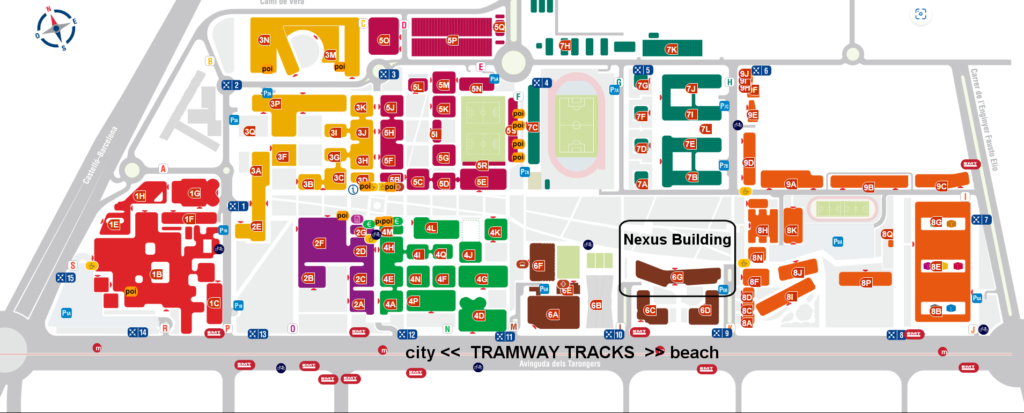
You can get to the Nexus building from gate L of the UPV campus easily by walking (see the picture below). Gate L is close to Tarongers tramway stop (lines 4 and 6) and bus stop 1900 – Col·legi Major at Tarongers Avenue (lines 93 and 98). Bus lines 18, 40 and 71 can also bring you close by.
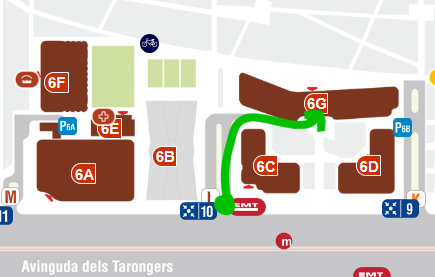
About the UPV
CONTENT NOT YET AVAILABLE
About Valencia
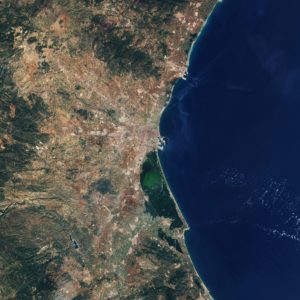
Located on the Iberian Peninsula’s eastern coast, Valencia is the third-largest city of Spain in population terms (around 800,000 inhabitants in the town; up to 1.6 million people in the metropolitan area). It is also the capital city of the Valencian Community, one of the 17 autonomous regions of Spain. Spanish and Valencian are the two official languages in the region.
Climate
Valencia shows a hot-summer Mediterranean climate, with very mild winters and long warm to hot summers.
- Average temperature in July: LOW: 21.5 °C (70.7 °F) | MEAN: 25.6 °C (78.1 °F) | HIGH: 29.7 °C (85.5 °F).
- Probability of rain in July: 5%.
- Average relative humidity in July: 66%.
Gastronomy
CONTENT NOT YET AVAILABLE
Must-visit & must-do
TOP MONUMENTS
- La Lonja (The Silk Exchange).
- Ciudad de las Artes y las Ciencias (The City of Arts and Sciences).
- Catedral de València (The Cathedral).
- Iglesia de San Nicolás (Saint Nicholas Church).
- Mercado Central (Central Market).
- Torres de Serranos (Serranos Towers).
- Torres de Quart (Quart Towers).
Even more monuments!
TOP MUSEUMS
- Museum of Fine Arts of València.
- Science Museum.
- Ceramics Museum. Marqués de Dos Aguas Palace.
- IVAM- Valencian Institute of Modern Art.
- Silk Museum.
- The Valencia Museum of the Enlightenment and Modernity (MuVIM).
- Centre del Carme Cultura Contemporània.
Even more museums!
TOP ACTIVITIES
- Walk or cycle along the Turia gardens.
- Take in Valencia’s views from the Miguelete tower of the Cathedral.
- Take a swim at Valencia city beaches or have an ice-cream while walking along the maritime promenade.
- Meet the animals at the Oceanogràfic Aquarium and the Bioparc immersive zoo.
- Take pictures of the spectacular sunset at the Albufera Natural Park.
Even more things to do!
A little bit of history

Valencia (originally, ‘Valentia’ in Latin) was founded as a Roman colony in 138 BC. From the 10th century, under the Muslim rule in Spain, the city —then known as بلنسية, ‘Balansiyya’, as the whole taifa it belonged to— prospered, due to a booming trade in paper, silk, leather, ceramics, glass and silver-work. Later on, the city was taken by the Christian King James I in 1238 AD, and the whole region became a kingdom with self-government rules (historical outset of the current autonomous region) within the Crown of Aragon.

During the 15th and 16th centuries (Valencian Golden Age), Valencia became the most populous city in the Crown of Aragon and one of the most influential cities of the Mediterranean, basing on textile production and trade. The magnificent Valencian-Gothic Silk Exchange building (which can still be visited nowadays) became a commercial emporium that attracted merchants from all over Europe.
In 1707, as a result of the Spanish War of Succession, Valencia lost its self-governance status and became a part of a more centralized Spanish state under the reign of Philip V, the first Bourbon king of Spain (7th great-grandfather of the current King of Spain, Philip VI). During the 18th century, the Valencian economy recovered with the rising manufacture of woven silk and ceramic tiles.
During the 19th century, and after having won the war against Napoleon’s dominance, Valencia —like the rest of Spain— experienced a transition from a privilege-based to an economic-class-based society, while living in a climate of political conflict between liberalists and absolutists, and between republicans and royalists.
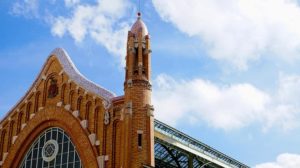
In the early 20th century, Valencia was an industrialized city. There was a large production of hides and skins, wood, metals and foodstuffs, this last with substantial exports, particularly of wine and citrus. The best expression of this dynamic was in the regional exhibition of 1909, which depicted the progress of agriculture and industry. Among the most architecturally successful buildings of the era were those designed in the Art Nouveau style, such as the North Railway Station and the Central and Columbus markets, the former being one of the nicest, biggest, oldest running food-markets in Europe.
From November 1936 to October 1937, Valencia became the capital city of Republican Spain during the Spanish Civil War (1936–1939), in which supporters of the (left-leaning) Second Spanish Republic fought against adherents of the so-called (conservative) Nationalist revolt, which finally won the war. Valencia survived 442 bombardments. Several anti-aircraft shelters from that time have been preserved and can be visited nowadays.
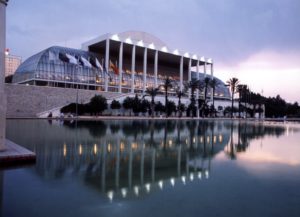
Since the return to democracy in the late 1970s, Valencia and its region experienced a surge in its economical and cultural development, based on iconic architectural creations such as the Concert Hall, Norman Foster’s Conference Centre and Santiago Calatrava’s City of Arts and Sciences, as well as on the celebration of great events such as the 33rd America’s Cup in 2010.
Nowadays, the city of Valencia is headed towards a greener, more sustainable horizon, basing on its Mediterranean roots. As a proof of this, in 2017, the city hosted several FAO’s meetings on sustainable food production, which contributed to the creation of the World Sustainable Urban Food Centre (CEMAS) in 2019. The city has recently improved and expanded its network of cycle lanes throughout the town, and some emblematic places, such as the Plaza de la Reina and the Plaza del Ayuntamiento, have been pedestrianized. In 2022, Valencia acted as World Design Capital. The city has been recently selected as the European Green Capital for 2024 (it is the first Mediterranean city to obtain this recognition). It was also one of the three finalists for the 2022 European Capital of Innovation (iCapital) Awards (the city of Nantes being the winner in 2019).